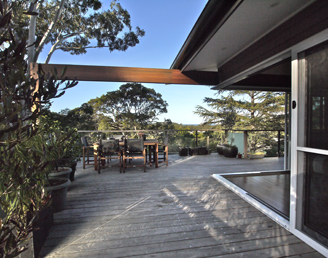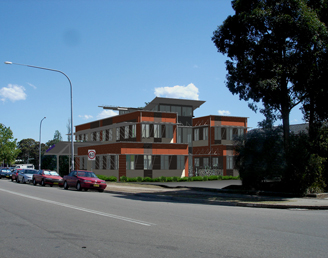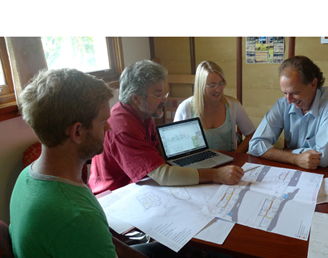I have some good news, and some bad news…
Posted by admin on 04/04/2011 at 6:58 amSeargent Schulz has a lot to answer for…
I just returned from a long weekend in and around the Macquarie Marshes, in northern NSW. These are unique in the world, in that the Macquarie River is the only Australian inland river which opens out into a complex of marshes partway down its course, losing any real defined main river channel, and then regathers into a clearly defined single river again, before joining the mighty Darling further north. The marshes are a mix of islands of normally dry ground, surrounded by a matrix of water of varying widths and depths. The water nurtures an almost unbelievable variety of life – microbes, insects, reptiles, birds small and large, and marsupials aplenty – everywhere you look you see a living breathing thing of the scaly, feathered, or furry kind… it is such a buzz! And the local farmers and graziers love their marshes, and with few exceptions, look after it pretty well. It’s an interesting picture – much like the Kimberley in WA – where agriculture and wilderness can co-exist, with marginal change. Of the 220,000 Ha that is the whole of the Macq Marshes, about 18,000 Ha is preserved in two separate wilderness reserves. The Marshes are about 120km long (north-south), and 40km wide.
The good news is there is real water in the Marshes for the first time in about 12 years. In fact, since 1964, Burrendong Dam has had a serious impact on the regular flood events that shaped the Marshes. But it is a resilient landscape, as most Australian landscapes are. They have to be – we are prone to long dry periods punctuated by few wet years. Eastern Australia has enjoyed la nina for the last year or two, and with it the rains have some in good measure. The floods in SE Qld attest to that, and those rains fell all the way down to Victoria, where it flooded some more. Central West NSW also had some flooding, but this was minor by comparison. Trees had flood debris that showed levels 6m or more above normal levels, and many towns were cut off for days at a time, several times. You may not have heard about it, with the catastrophic events north and south claiming more attention. Plus the locals take it in their stride – that’s life in western NSW!
The Marshes have sprung back into life, and I cannot begin to list here the species that have reappeared there. I’m not much of a twitcher, but for the first time I was able to distinguish between the Greater and the Intermediate Egret. I discovered a shiny blue-black beetle that looks like a cockroach at first, which flies away when disturbed, but also dives under water if given the chance – no idea what it is, but all suggestions welcome! Flocks of birds ride thermals all day, while just as many paddle, wade and swim. Snake-necked darters compete with the blue crane and white-necked heron for small fish swimming under a carpet of minute red and green aquatic flowers. These cover much of the surface of the water, giving the impression of a solid cover, until you see a small grebe swimming along, then suddenly disappear underneath the carpet. We waded in calf-deep water in search of more birds, yet really, if you sit quiet and still, they come to you! Some of reeds are way over head height, and can grow so quickly that a creek that was canoe-able a fortnight ago is impassable now. Now that’s fecund!
The bad news is that this fecundity is available to all comers, weeds and ferals alike. Weeds, especially Bathurst Burr, are rampant along every road and track, and riverbank, although thankfully absent from the marshlands themselves. Feral pigs are reputedly in abundance, although thankfully we were challenged by none. The waterways of Victoria, NSW and Qld are being held to ransom by carp. They swim through the shallows of the marshes, stirring up the mud and making the water unnaturally turbid. In the process they make life very difficult for other native species, and are becoming dominant. Roadkill litters the roadside at close intervals, and I’m not pleased to say that one emu ended an otherwise happy life under my own vehicle. Overcoming that problem is going to take a lot of work.
But the other problems – weeds and ferals – can be overcome if we put in the effort. At the moment, we, the community as a whole, just don’t see it as a big enough problem, and until we do, it will remain, and grow, just like the cane toad. Farmers and graziers are in the ideal position to tackle weeds, but are hard pressed making a living from things they can sell – no one pays them to kill weeds. Maybe we should – but with hospitals closing, and schools falling apart, how do we justify the budget? We have a weeds of National Significance list, and a notional sum is allocated to their control each year, but it is, to use the traditional expression, like pissing on a bushfire.
Eradicating feral animals is currently a very hit and miss affair, literally. Shooters claim to have protection of country in mind, and currently the NSW Government looks like it might reconsider the ban on shooting in National Parks. In reality, it is pathetically inadequate, and always will be – there can never be enough shooters to kill off every pig, fox, rabbit and dog that plagues bush and farm. In fact, I know pig shooters who deliberately avoid killing breeding sows, so there will be a continued supply of pigs for next time. Has the Shooters and Fishers Party got a position on that?
The only practical control will be biological combined with physical. Mixo- and calici- viruses came close to wiping out rabbits – that kind of control must be worth much more serious research. The same approaches will probably be needed with carp, and the other ferals. Weeds can be sprayed with selective growth retardants, and physically removed – we already have the means on that front, but not the political will to make it happen on a broad scale.
I often wonder what idiot thought introducing rabbits was a good idea, or letting a pig go feral for sport, or putting the foul-tasting mud-stirring carp into a river – what the?? But weeds are often a different story. Some arrived as unwelcome weeds – just slipped though a lazy net. But others were actually planted – out of choice! Huh?? Australia has more plant species than all of Britain and Europe combined – and we’re still discovering new ones (see latest Australian Geographic). Why do people see the need to plant ANY introduced plants, except for food? When we design landscapes, can we let Pauline Hanson free in the only thought-realm that can benefit from her narrow view of how Australia should be – rid of all imported exotic species (except Botanic Gardens, and food crops)?
Some quick facts on the Macquarie Marshes:
They are Ramsar listed, and a useless snippet of info on the Nature Reserves can be had from NSW Govt. The locals however have a terrific website, with great photos (better than mine!), detailed history, and lots more.
Access is difficult. Not arduous, just hard to make happen. 100km north of Warren, 250km northwest of Dubbo, 7-8 hours drive from Sydney. Look out for emus and roos, avoid driving near dark, or just after. Mind you, we hit our poor emu at 2.30pm, so assume nothing.
The Nature Reserves are locked for all but two days of the year, and you have to be lucky to get onto a study group. Most of it is private property, and not all landholders allow free access, for all the usual reasons. The one standout is Willie Retreat – a property centrally located in the Marshes, with cheap camping and cabins. It is run by a dynamic woman of advancing years, Myra Tollhurst, and other willing helpers. Myra has spent 30 years on the Marshes, and knows their comings and goings – there aren’t many things she can’t tell you. And the menagerie of wildlife that share her house garden is both amusing and heart warming – like the 15 month old emu that her husband Phil rescued from a barb wire fence, and sewed up without anaesthetic – and now, free to roam, stays close to the homestead most days. And the hand reared roo, and the ceaselessly chattering apostlebirds, and more. Don’t arrive at Willie Retreat after dark.
The man with probably the best scientific understanding of the Marshes is Prof Richard Kingsford, often seen speaking on behalf of wetlands, the Murray-Darling, or Lake Eyre on TV. I am going to suggest to him that if more people could see the marshes, they would better understand the debate about water allocation – and that would help inform the political process.
Sustainable House Design
We will help you create a family home that works well, feels good, is kind to the environment, culturally appropriate and reduces your energy and running costs.
Read MoreSustainable Commercial Buildings
We design your building to help reduce your operating costs, optimize the life cycle of your building, increase your property value and increase employee productivity.
Read MoreWorking with Envirotecture
We design beautiful, sustainable buildings that work for you, your family or your business. Full range of building design, consulting and training services.
Read More






















